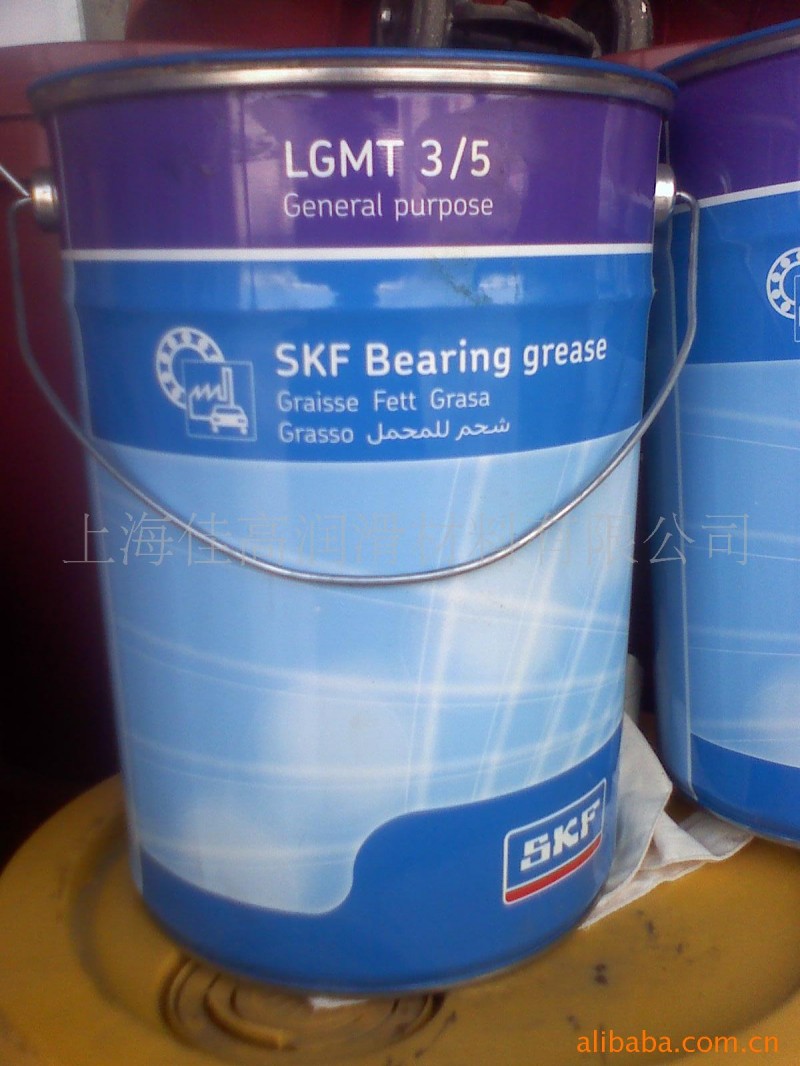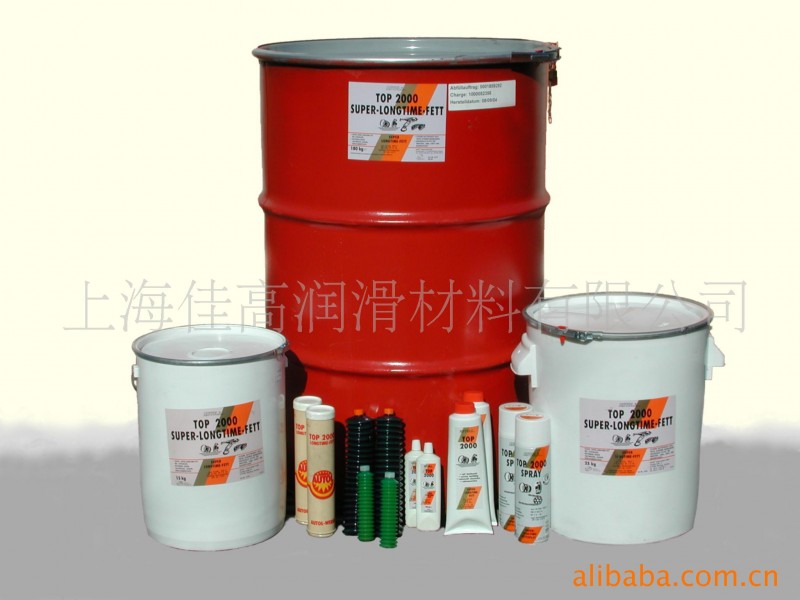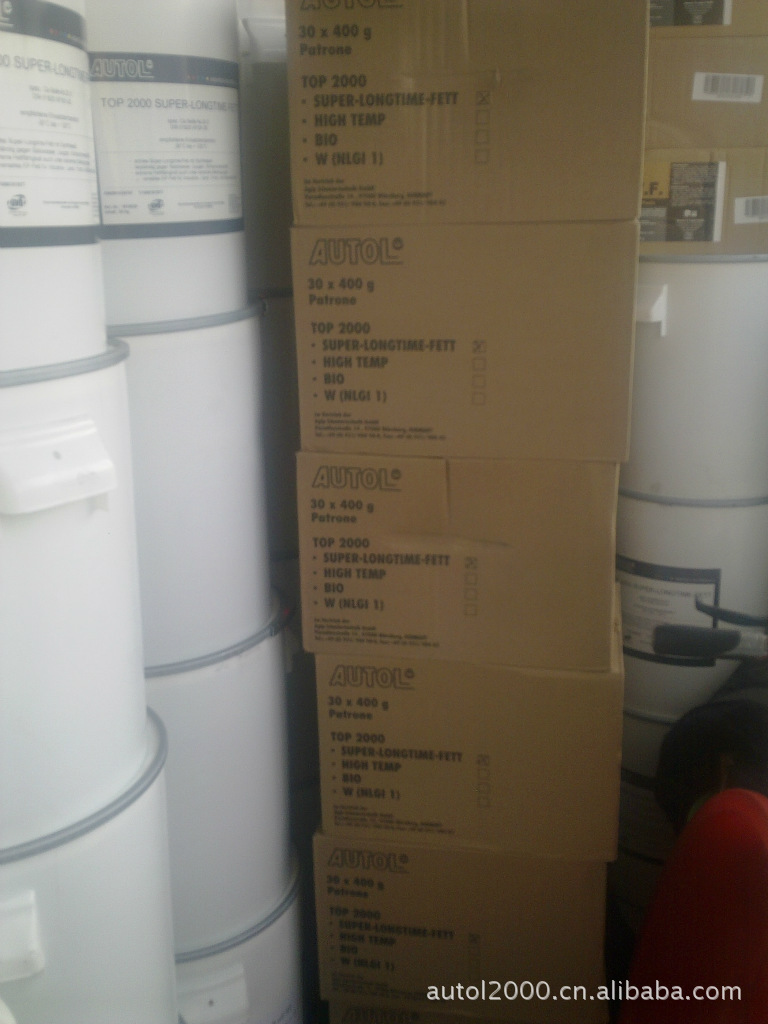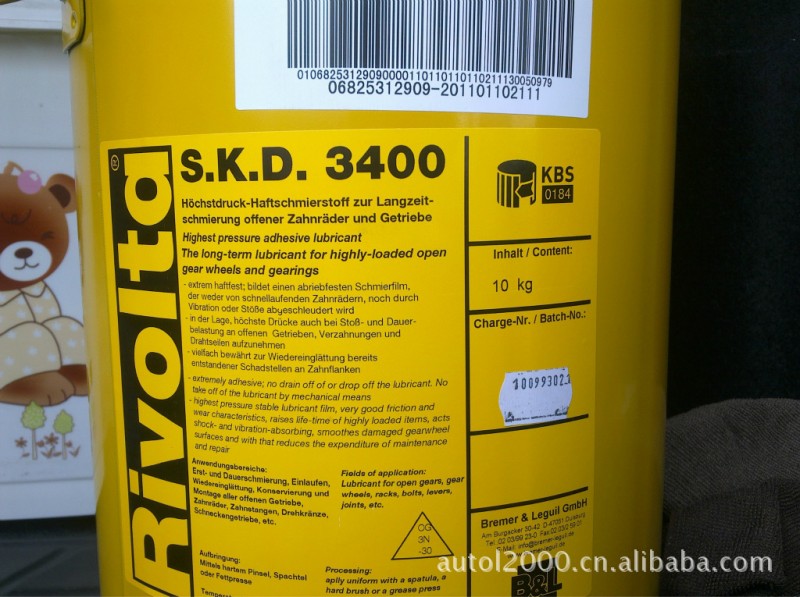| 品牌 | SKF | 型號 | LGMT3/5 | 加工定製 | 否 |
| 是否標準件 | 標準件 | 樣品或現貨 | 現貨 | 是否進口 | 進口 |
| 類型 | 滾珠保持圈 | 用途 | 關節軸承 | 材質 | 不銹鋼 |
LHMF 300/5 MATERIAL SAFETY DATA SHEET (MSDS)
Section 1 - Product and company identification
Product identifier : SKF LHMF 300 Mounting Fluid
Product description : N/Av
Internal part no. : LHMF 300/5
Product use : Bearing Hydraulic Dismounting Fluid
Trade name : LHMF 300 Mounting Fluid
SKF Maintenance Products B.V.
Supplier’s name and address: Manufacturer’s name and address:
SKF Canada Limited
40 Executive Court
Scarborough, ON, Canada
M1S 4N4
Post Box # 1008
NL-3430 BA
Nieuwegein, Utrecht, The Netherlands
: 1. SKF, The Netherlands at +31 30 6307200
2. SKF, Scarborough, ontario at (416) 299-1220 (24 Hours)
Emergency tel. #
Section 2 - Composition/information on ingredients
dermal
LD50
oral
LC50(4hr)
Ingredients CAS # % (weight) inh, rat
Paraffinic base oil N/Av >5000 mg/kg (rat) >2000 mg/kg
(rabbit)
72623-85-9 30.00 - 60.00
Paraffinic base oils >5000mg/m³ (rat) >5000 mg/kg (rat) >2000 mg/kg
(rabbit)
72623-87-1 30.00 - 60.00
Section 3 - Hazards identification
Emergency overview
Red liquid. Odour - Mineral oil.
Caution! May cause respiratory irritation. May be mildly irritating to eyes and skin.
Ingestion of large amounts may be harmful.
***Potential health effects***
Target organs : Eyes, skin, respiratory system and digestive system.
Routes of exposure : Eye contact; Skin contact; Ingestion; Inhalation.
Inhalation If product is heated or mists are formed, inhalation may cause irritation to the nose, throat and respiratory
tract.
Signs and symptoms of short-term (acute) exposure
:
May cause mild transient irritation. Prolonged contact, such as when trapped against the skin under clothing
or jewelry, may be more irritating. Hydrocarbons injected into the skin under pressure can cause severe
injury.
Skin :
Eyes : May cause mild eye irritation. Symptoms will include pain, redness and tearing.
Ingestion : Low degree of toxicity. May have laxative effects. May cause nausea, vomiting, and diarrhea.
: Prolonged or repeated skin contact may cause defatting and drying resulting in irritation and
possible dermatitis.
Potential chronic health effects
Other important hazards : None reported by the manufacturer.
Carcinogenic status : See TOXICOLOGICAL INFORMATION, Section 11.
Additional health hazards : See TOXICOLOGICAL INFORMATION, Section 11.
If breathed in, move person into fresh air. If breathing has stopped, give artificial respiration.
Get medical attention/advice if you feel unwell.
Inhalation :
Section 4 - First aid measures
MSDS Preparation Date (dd/mm/yyyy): 05/10/2007 Page 1 of 5
LHMF 300/5 MATERIAL SAFETY DATA SHEET (MSDS)
In case of contact with skin, wash with mild soap and plenty of water. If irritation persists,
seek prompt medical attention. Wash contaminated clothing before re-use. Subcutaneous
injection may require surgical treatment.
Skin contact :
Immediately flush eyes with plenty of water for at least 15 minutes. If irritation persists, seek
prompt medical attention.
Eye contact :
: Do NOT induce vomiting. Never give anything by mouth to an unconscious person. Get
medical attention.
Ingestion
Fire hazards/conditions of flammability
Section 5 - Fire fighting measures
Not flammable under normal conditions of handling. Liquid may burn upon heating to
temperatures at or above the flashpoint. Empty containers retain residue (liquid and/or
vapour) and can be dangerous. Minor contamination by hydrocarbons of higher volatility may
increase flammability. Do not pressurize, cut, heat or weld empty containers. Keep away
from heat and sources of ignition.
:
Flash point : >200°C
Flash point method : ASTM D 93 Auto-ignition temperature : >350°C
N/Av N/Av
Lower flammable limit (% by vol.)
: :
Upper flammable limit (% by vol.)
Oxidizing properties : None known.
Flame projection length : N/Ap Flashback observed : N/Ap
Explosion data: Sensitivity to mechanical impact / static discharge
: Not expected to be sensitive to mechanical impact or static discharge.
Dry chemical, foam, carbon dioxide and water fog. Do not use water jet, as this may spread
burning material.
Suitable extinguishing media :
Firefighters should wear proper protective equipment and self contained breathing apparatus
with full face piece operated in positive pressure mode. Move containers from fire area if safe
to do so. Water spray may be useful in cooling equipment exposed to heat and flame. Direct
water or foam spray may cause frothing which can increase the intensity and range of the
fire.
Special fire-fighting procedures/equipment
:
: Oxides of carbon and nitrogen.
Hazardous combustion products
Restrict access to area until completion of clean-up. Ensure clean-up is conducted by trained
personnel only. All persons dealing with clean-up should wear the appropriate protective
equipment including self-contained breathing apparatus. Keep all other personnel upwind
and away from the spill/release.
Personal precautions :
Section 6 - Accidental release measures
Do not flush into surface water or sanitary sewer system. For large spills, dike the area to
prevent spreading.
Environmental precautions :
Spill response/cleanup Ventilate area of release. Eliminate all ignition sources. Stop the spill at source if it is safe to
do so. Cover any spilled material with non-combustible absorbent material, such as
vermiculite or sand, then place absorbent material into a container for later disposal (see
Section 13). Clean contaminated floors and objects thoroughly while observing environmental
regulations. Notify the appropriate authorities as required.
:
Prohibited materials : None known.
Wear suitable protective equipment during handling. Use in a well ventilated area. Avoid
breathing vapours. Avoid contact with skin, eyes and clothing. Keep container tightly closed
when not in use. Keep away from heat and flame. Keep away from incompatibles. Handle
and open container with care. Wash thoroughly after handling. Warning: High pressure
greasing equipment is capable of injecting product under the skin. Such apparatus should be
handled with care. See Section 3.
Safe handling procedures :
Section 7 - Handling and storage
MSDS Preparation Date (dd/mm/yyyy): 05/10/2007 Page 2 of 5
LHMF 300/5 MATERIAL SAFETY DATA SHEET (MSDS)
Store in a cool, dry, well ventilated area, away from heat and ignition sources. Store away
from incompatible materials. Storage area should be clearly identified, clear of obstruction
and accessible only to trained and authorized personnel. Inspect periodically for damage or
leaks.
Storage requirements :
Incompatible materials : Avoid contact with strong oxidants such as liquid chlorine, concentrated oxygen, sodium
hypochlorite or calcium hypochlorite.
Special packaging materials : Always keep in containers made of the same materials as the supply container.
Section 8 - Exposure controls and personal protection
ACGIH TLV OSHA PEL
Ingredients TWA STEL PEL STEL
5 mg/m3 (As 'Oil
mist, mineral')
5 mg/m3 (As 'Oil N/Av
mist, mineral')
Paraffinic base oil N/Av
5 mg/m3 (As 'Oil
mist, mineral')
5 mg/m3 (As 'Oil N/Av
mist, mineral')
Paraffinic base oils N/Av
: Use with adequate ventilation. Local ventilation is recommended if the product is misted or
used in a confined space, or if the TLV is exceeded.
Ventilation and engineering measures
wher exposure is likely to be prolonged or is unknown wear approved respiratory protection.
If the TLV is exceeded, a NIOSH/MSHA-approved respirator is advised.
Respiratory protection :
Impervious gloves must be worn when using this product. Confirmation of what type of
material is most suitable for the intended application, should be obtained from glove
suppliers.
Skin protection :
Eye / face protection : Safety glasses with side-shields or chemical splash goggles.
Other protective equipment Depending on conditions of use, an impervious apron should be worn. Other equipment may
be required depending on workplace standards. An eyewash station and safety shower should
be made available in the immediate working area. Remove and wash contaminated clothing
and gloves, including the inside, before re-use. Wash hands before breaks and at the end of
workday.
:
Section 9 - Physical and chemical properties
Physical state : Liquid. Appearance : red
Odour : Mineral oil Odour threshold : N/Av
pH : N/Av
Boiling point : 200°C Specific gravity : 0.882
Melting/freezing point : < - 25°C Coefficient of water/oil distribution
: N/Av
Vapour pressure (mmHg @ 20° C / 68° F) Solubility in water : Insoluble.
: N/Av
: N/Ap
Vapour density (Air = 1) : N/Av Evaporation rate (n-Butyl acetate = 1)
N/Av
Volatile organic compounds (VOC's)
:
Volatiles (% by weight) : N/Av
Absolute pressure of vontainer Viscosity : 300 cSt
: N/Av
Stability and reactivity : Stable under the recommended storage and handling conditions prescribed. Hazardous
polymerisation does not occur.
Section 10 - Reactivity and stability data
: Keep away from excessive heat, open flames, sparks and other possible sources of ignition.
Empty containers retain residue (liquid and/or vapour) and can be dangerous. Do not
pressurize, cut, heat or weld empty containers. Caution! Never use pressure to empty
container. Heat, sparks and open flames, electrical and static discharge.
Conditions to avoid
Materials to avoid and incompatibility
MSDS Preparation Date (dd/mm/yyyy): 05/10/2007 Page 3 of 5
LHMF 300/5 MATERIAL SAFETY DATA SHEET (MSDS)
: See Section 7 (Handling and Storage) section for further details.
None known, refer to hazardous combustion products in Section 5.
Hazardous decomposition products
:
Toxicological data: There is no available data for the product itself, only for the ingredients. See Section
2.
Section 11 - Toxicological information
Irritancy of product : Mild eye irritant. Mild skin irritation.
Carcinogenic status : No components are listed as carcinogens by ACGIH, IARC, OSHA or NTP.
Reproductive effects : Not expected to have other reproductive effects.
Teratogenicity : Not expected to be a teratogen.
Mutagenicity : Not expected to be mutagenic in humans.
Sensitization to material : Not expected to be a skin or respiratory sensitizer.
Synergistic materials : None known or reported by the manufacturer.
:
Medical conditions aggravated by overexposure
Pre-existing skin, eye and respiratory disorders.
Environmental effects : No information available.
Section 12 - Ecological information
important environmental characteristics
No data is available on the product itself. The product should not be allowed to enter drains
or water courses, or be deposited wher it can affect ground or surface waters.
:
Ecotoxicological : No data is available on the product itself.
Handle waste according to recommendations in Section 7. Do not contaminate ponds,
waterways or ditches with chemical or used container.
Handling for disposal :
Section 13 - Disposal considerations
Methods of disposal : Dispose of in accordance with federal, provincial and local hazardous waste laws.
Section 14 - Transportation information
Regulatory
Information UN Number Shipping Name Class
Packing
Group Label
TDG None Not regulated. not regulated none
None.
Additional
information
TDG
Section 15 - Regulatory information
Canadian Environmental Protection Act (CEPA) information: All ingredients listed appear on the Domestic Substances List (DSL).
WHMIS classification:
This product is not a WHMIS controlled product in Canada.
This product has been classified according to the hazard criteria of the CPR and the MSDS contains all of the
information required by the CPR.
TSCA: All listed ingredients appear on the Toxic Substances Control Act (TSCA) inventory.
US federal information:
Section 16 - Other information
Legend : ACGIH: American Conference of Governmental Industrial Hygienists
MSDS Preparation Date (dd/mm/yyyy): 05/10/2007 Page 4 of 5
LHMF 300/5 MATERIAL SAFETY DATA SHEET (MSDS)
AIHA: American Industrial Hygiene Association
CAS: Chemical Abstract Services
DSL: Domestic Substances List
HSDB: Hazardous Substances Data Bank
IARC: International Agency for Research on Cancer
Inh: Inhalation
MSHA: Mine Safety and Health Administration
N/Ap: not applicable
N/Av: not available
NIOSH: National Institute of Occupational Safety and Health
OSHA: Occupational Safety and Health Administration
PEL: Permissible exposure limit
RTECS: Registry of Toxic Effects of Chemical Substances
STEL: Short Term Exposure Limit
TCC: Tagliabue Closed Cup
TDG: Canadian Transportation of Dangerous Goods Act & Regulations
TLV: Threshold Limit Values
TSCA: Toxic Substance Control Act
TWA: Time Weighted Average
WEEL: Workplace Environmental Exposure Level
WHMIS: Workplace Hazardous Materials Identification System
1. International Agency for Research on Cancer Monographs, searched 2007.
2. Canadian Centre for Occupational Health and Safety, CCInfoWeb databases, 2007
(Chempendium, HSDB and RTECs).
3. Material Safety Data Sheets from manufacturer.
4. ACGIH, Threshold Limit Values for Chemical Substances and Physical Agents & Biological
Exposure Indices for 2006.
References :
Prepared for:
SKF Canada Limited
40 Executive Court
Scarborough, ON, Canada, M1S 4N4
Telephone: 416-299-1220
:
MSDS Preparation Date (dd/mm/yyyy)
05/10/2007
End of document
MSDS Preparation Date (dd/mm/yyyy): 05/10/2007 Page 5 of 5


批發市場僅提供代購諮詢服務,商品內容為廠商自行維護,若有發現不實、不合適或不正確內容,再請告知我們,查實即會請廠商修改或立即下架,謝謝。









